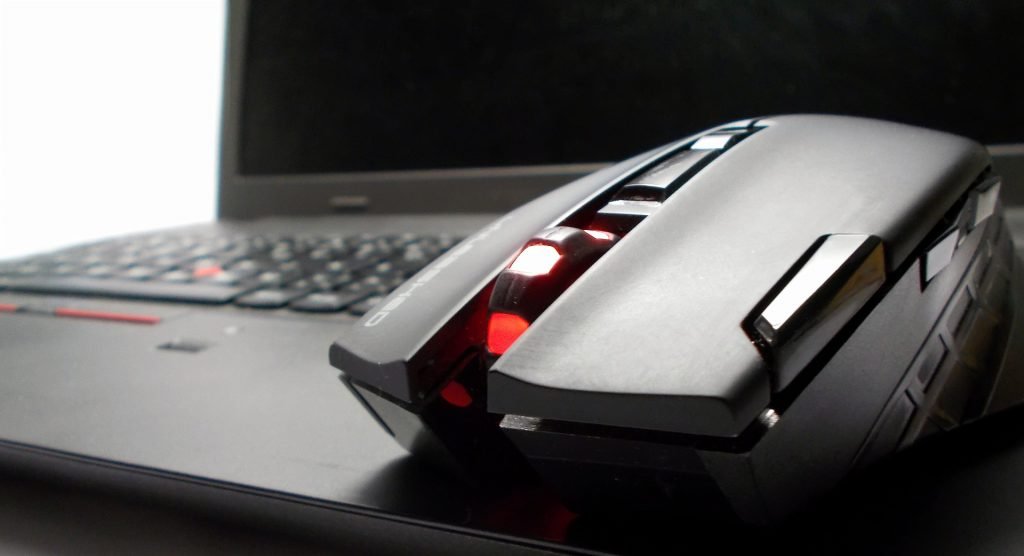You’ve spent countless hours build a gaming desk, and now you’ve got a slick desktop computer, several monitors, killer speakers, and a computer desk that’s too small to hold it all. Here’s how to construct your own ergonomic, personalized computer table that displays all of your electronics, looks beautiful and isn’t too pricey.
Build A Gaming Desk

Make the surface ready
My door began with me sanding, staining, and finishing it myself. Although the procedure is not difficult, the instructions are beyond the scope of this article. If you’ve never done it before, enlist the help of a friend or watch Steve Ramsey’s excellent YouTube tutorials. It should only take a couple of hours of your time, plus a few days of drying time between coats.
Make an ergonomics plan
Try out some new ergonomics while you’re waiting for the door to dry. Take a seat in your desk chair and adjust the seat height and armrests to your liking. Your feet should be flat on the ground, and your elbows and knees should be at about 90 degrees.
Measure the distance from the floor to the top of the armrests, then deduct the thickness of your surface—usually about an inch and a half. The resulting measurement is the ideal height for your filing cabinet or drawers, as well as the setting for your OLOV legs. Make a list and purchase the drawers if you intend to use them.
Place your components in the correct order
Turn your slab over and start planning your construction from the legs up after it’s finished. My recommendation is one leg in each of the four corners, plus a fifth in the center of the back edge for support. If you want to use that filing cabinet, it will take the place of one of the front legs.
Next, grab your anti-sag braces and position them around the surface’s center. If they interfere with the placement of your filing cabinet, you may need to move them slightly off-center.
Place any cable management trays in the leftover space if you have any. I’m using an Ikea SIGNUM tray with a surge protector mounted underneath. To make everything, I had to do a little finagling, so plan everything out before you start drilling holes.
Start assembling
Mark and drill pilot holes for the legs, anti-sag bracing, and everything else you’re adding to the underside once you’ve chosen a location for everything. This is crucial: the wood will most certainly fracture if you start screwing into the surface. Except for the legs themselves, attach everything, including the leg brackets. I recommend using your drill as a driver to speed up the procedure because it will take some time and effort.
Include the legs
It’s a good idea to take your door into the office for the final few steps—it’ll be a lot easier to move before the legs are attached. Screw the OLOV legs into the brackets once it’s arrived in its new home. Then, by unscrewing the bottom, sliding them out, and tightening them clockwise, you can adjust them to your preferred height.
Check the stability and height of the structure
Now turn your desk over and place the filing cabinet beneath it. Check to see if everything is level. (If you don’t have a level, your phone may come with a basic one.)
Check the stability of the desk while you’re at it, and compare it to the height of your chair. It may appear low to the ground, but that’s because most workstations are built for writing rather than computing. Writing height computer workstations are common, with a keyboard tray at arm level. You could raise your home-built desk and use a screw-on keyboard tray to improve ergonomics, but I prefer to have everything on one large, flat surface.
Organize everything
Set up your computer, adjust your display so the top is at eye level, and enjoy your custom workspace once you’ve double-checked the size and stability of your creation.

What you’ll require?
A desk can be built in an unlimited number of ways. But for this project, I have four requirements for my computer desk.
Size
The great majority of the desks in the store are 60 inches or less in length. I required a wide computer desk with at least 80 inches of width to fit all of my gear, and the few store-bought options I discovered just didn’t cut it. They were either unsightly and poorly constructed, or they were prohibitively expensive—a large, good-quality one can set you back at least $400.
Cheap
Making something from scratch rather than buying it nearly always saves money—in this case, it will save hundreds of dollars. Our materials retail for roughly $250 new, but depending on your deal-hunting talents and the parts you already own, you should be able to buy everything for $150 or less. That’s about half the price of most similarly sized store-bought workstations.
Because there are so many materials to choose from, make sure you choose the ideal wood for your desktop. The sort of wood you select will be determined by the color or pattern you want to achieve and the amount of weight it will have to support.
Easy
For around $100, you can make a full desk out of a single piece of plywood, but you’ll need a lot of skills and know-how. Even if it raises the price a little, we want our project accessible to everyone, including those with little or no carpentry experience.
Conclusion
This is how my desk came to be. However, there are many other methods to put one together, and you might have your ideas. Do you know how to work with wood and want to save even more money? Create your legs out of wood! Do you want USB ports that are simple to reach? Make them a part of the surface! Do you enjoy technology and want to experience what it’s like to live in the future? A fingerprint scanner is a must-have! The beauty of this template is that you may tailor it to your specific tools, abilities, and requirements.




